How to grow a violet from seeds at home?
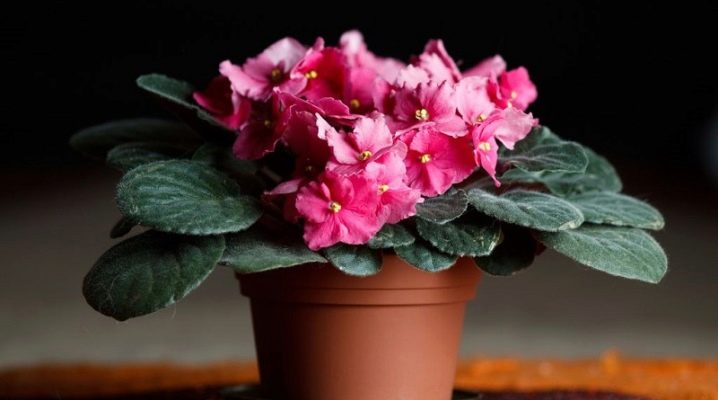
In an urban setting, many seek to decorate an apartment with greenery and flowers that bring beauty to the house, being a part of nature. Saintpaulia has been one of the most popular types of domestic plants for several decades. This is the same flower popularly called the violet. Florists successfully breed Saintpaulias, propagate them and ensure that the plants constantly bloom, pleasing the eye all year round. Let's figure out how to grow a violet from seeds at home.
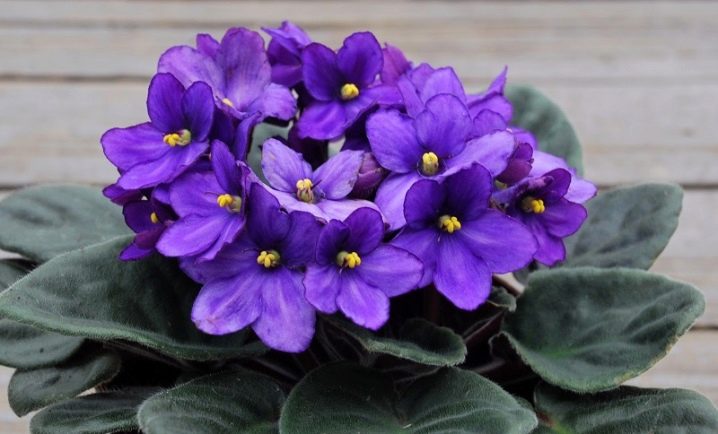
Does violet have fruit?
There is a huge selection of Saintpaulia varieties, but the most popular varieties are purple, blue and pink. After pollination, the beautiful flowers form a fruit - a seed capsule, in which, as the name suggests, seeds ripen.
Seed ripening is a long process. If the fruit is set in the spring (successful pollination has occurred), then it will ripen for about 5-6 months. If pollination took place in the fall, then the box will mature for 7-9 months. The shape of the fruit can be either ovoid or fusiform or subulate. The pod leaves are destroyed by moisture, and also crack when ripe, allowing the seeds to fall into the soil.

When and how are the seeds harvested?
To use the seeds for further propagation of violets, they must be properly harvested. It is difficult to track the moment of full ripening, so at home it is better to remove the box from the peduncle in advance so that the seeds do not fall into the same pot when the shutters open themselves. This should be done when the peduncle dries up and the fruit turns brown.
The main thing is that the seeds are viable. This may not be the case if you remove the box too early. If you collect the fruits 3-4 weeks before the natural opening of the fruit, then the germination of seeds will be as much as 80%.
After separating the fruit capsule from the violet, it must be completely dried in a warm room. This will take 1-3 weeks. You can open a dried box with the tip of an ordinary needle. The seeds are hidden inside the capsule.
They must be poured onto a white sheet of paper - this way the seeds are better visible.
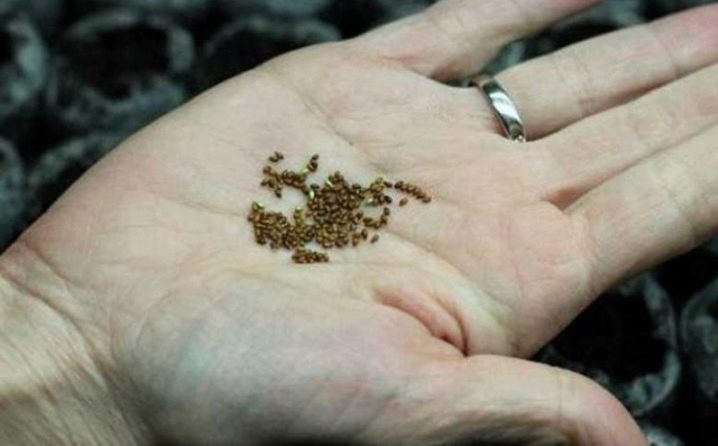
What varieties can you grow?
Many varieties of indoor uzambara violets can be grown from the seeds of the house. Viola garden varieties are also easily grown. The types of this plant can be distinguished by the main external characteristics.
- outlet diameter: micro, mini, standard, large;
- inflorescence shape: classic, star-shaped, bell-shaped, arachnid, wasp-shaped;
- petals: double, semi-double, simple;
- color of flowers: one-color, two-color, multi-color;
- leaf shape: round, oval, pointed, elongated, heart-shaped;
- color of leaves: monochromatic, interspersed;
- leaf edges: wave, serrated, even.
The following varieties are usually grown at home:
- "Caprice": inflorescences are white, terry with a fringe of a light green hue, wavy leaves, variegated;
- "Macho": inflorescences are purple, double, leaves are simple, green;
- "Your Majesty": pink inflorescences, terry with wavy edges, bright green leaves;
- "Sea Wolf": inflorescences are blue, with a mesh pattern, large, dark green leaves;
- "Frill": inflorescences of a dark blue shade with a green wavy border, wavy leaves.
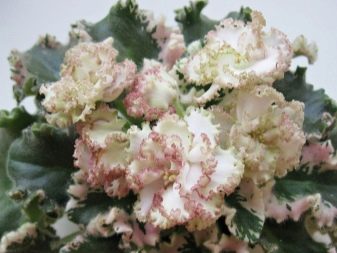
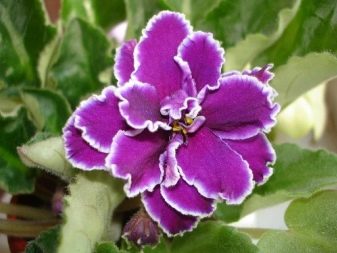
Soil preparation
For planting Saintpaulia seeds, you can use ready-made soil.You can also make your own flower nutrient mixture. The finished version can be purchased at any store that specializes in indoor plants.
And here are several options for compositions that a florist can make himself.
- You should mix deciduous, peat, turf and coniferous components in a ratio of 3: 2: 1: 1. Then you need to add crushed sphagnum, vermiculite or, for example, perlite, for loosening. It is also advisable to use charcoal.
- It is necessary to mix the coniferous and sod parts in a 1: 1 ratio. Then add peat and crushed sphagnum in the same quantities. You should also add a double dose of the leaf component and half of the sand (1: 1: 1: 1: 2: 0.5) there. It is useful to add coal as a sorbent, fertilizer (K, Ca, F), as well as an antibacterial composition.
- It is necessary to take the garden land from the garden where the legumes were grown. Wormhole soil is also suitable (it is the most granular). For 4 parts of the land, you need to take 1 part of sand and 1 part of black high-moor peat.
Each ingredient should be sieved and cleaned of plant debris so that rotting does not interfere with the healthy growth and development of seedlings.
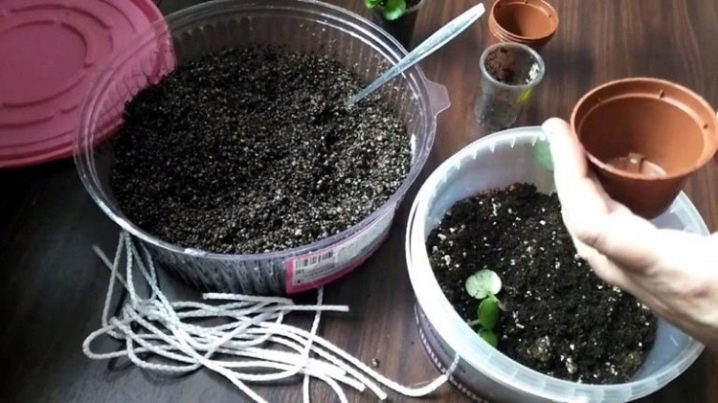
There are many recipes for soil for violets, but none are the only correct ones. It all depends on the quality of the ingredients. It is important that the soil is not very greasy, loose, absorbs moisture well, but at the same time allows air to pass through so that the roots do not rot. You can use different ratios to get your blend empirically.
Before planting plants in the soil, you must disinfect it with heat or cold (steaming or freezing). You can also use a foundation solution or another drug. To protect the plants from infection with any ailments, you can sprinkle the seeds with fungicidal powder. This is especially necessary when using components obtained independently outside the city.
For example, the use of sphagnum in the soil composition has a powerful antiseptic effect.
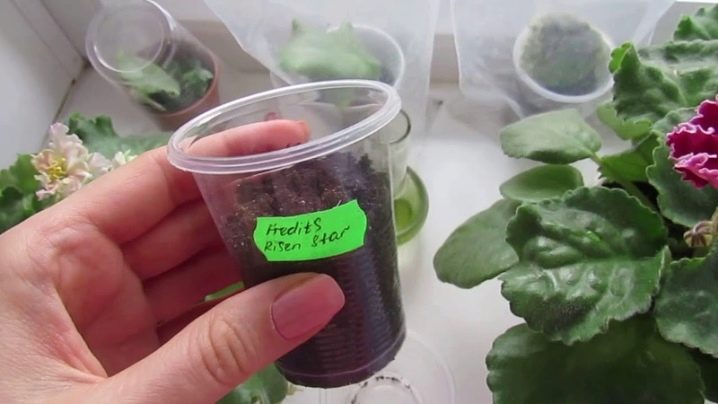
Sowing
Saintpaulia seeds are very small in size. Before sowing, it is worth pelleting them. The procedure will help to economically use seed material and plant future plants evenly.
Pellet coating is carried out in this way:
- seeds are sprayed with water and mixed with crushed charcoal;
- the mixture is shaken in a closed jar so that the coal disinfects the seeds and covers them with a protective layer;
- add sand in the same amount as coal, shake again.
After preparation, the seeds are placed in pre-moistened soil. The container is closed with a lid and placed in a warm place, but so that the direct rays of the sun do not fall on the seeds. It is necessary to maintain a stable temperature and soil moisture until sprouts appear. The temperature should be at + 20C, then the seedlings will appear in 20 days.
If the temperature is kept at + 25C, then the seeds will sprout earlier (already two weeks after planting).


Growing seedlings
After the appearance of sprouts of 0.5 cm and the first leaves, it is necessary to make a pick. Seedlings should be carefully dug up (for example, with a toothpick) and planted at a distance of 1.5-2 centimeters from each other into the ground with the addition of top dressing and charcoal. When the seedlings begin to interfere with each other, the planting is again carried out in small disposable cups. Several pieces can be dropped into one container. The approximate size of each container is 100 ml.
You can make a pick once, and when three leaves appear, immediately plant the plants at a distance of 7 cm from each other. If the seeds are planted in late summer - early autumn, then the culture is grown until August-September. When the plants grow stronger and larger, they are seated in separate small pots. The whole period is about a year. Violets grown from seeds bloom in the second year.
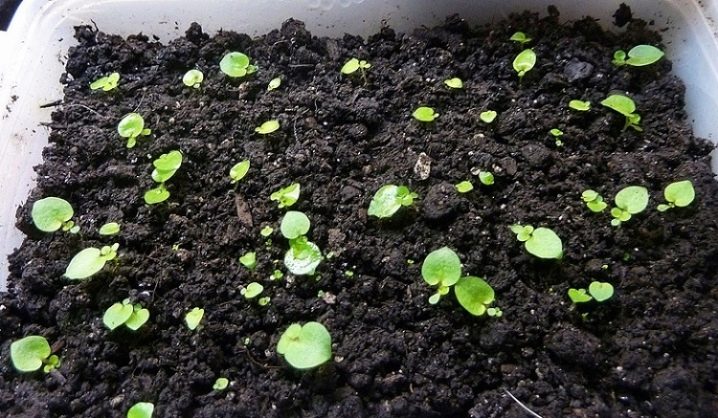
Care
To get beautiful and healthy Saintpaulias, you need to take care of them.Lighting, temperature, location of the flower, and appropriate care are important. Consider the basic rules for growing violets, the observance of which will allow you to achieve the desired result.
- Violets need light, but despite this, it is better to isolate them from direct sunlight.
- It is bad for a flower when the leaves come into contact with the glass.
- Violets love moisture, but you cannot water them with cold water, and also fall on the leaves when watering. You need to water it regularly, as the soil dries up, but you can't pour the violet.
- It is necessary to promptly remove dried flowers and damaged leaves.
- Violets are afraid of changes in temperature and cold.
- Top dressing is carried out every two weeks using mineral fertilizers (10 g per 3 liters of water). Plants especially love nitrogen. A deficiency can lead to poor growth and lack of flowers.
- When transplanting a plant, it is necessary to make drainage from perlite, mosses, expanded clay balls.
- The lower leaves should be left slightly above the soil. A socket is placed at the soil level. The wrong choice of depth leads to poor flower growth.
A deeply planted violet may rot and not grow, and one that grows too high will not bloom and look good.

Some growers propagate violets with leaves. To do this, you need to take a few leaves from an adult violet and put them in a container of water. Choose small jars made of dark glass so that the light does not directly hit the cut, but the container is transparent. The stalk should be long. The cut at the cutting is made diagonally. Change the water regularly.
In about a month, the roots will appear. After their appearance, plant the cutting in the ground. A new rosette of leaves is formed. If you are planting several shoots in one container, do not miss the moment of picking. It is important that the plant grows strong. This method is faster than breeding from seed, but the plant can be weaker and wilder.
Reproduction of violets is a wonderful hobby. Find one of the many varieties to your liking and get a real flower garden that will delight you every day. Despite some subtleties of care, the violet is not a very whimsical plant, therefore,Even a novice grower has a chance of successfully breeding these flowers.
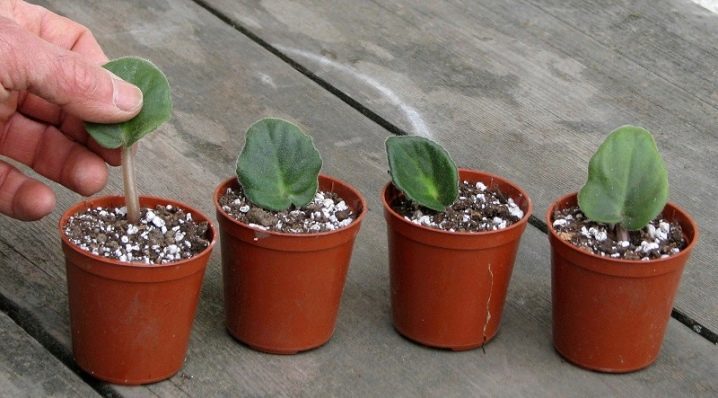































The comment was sent successfully.